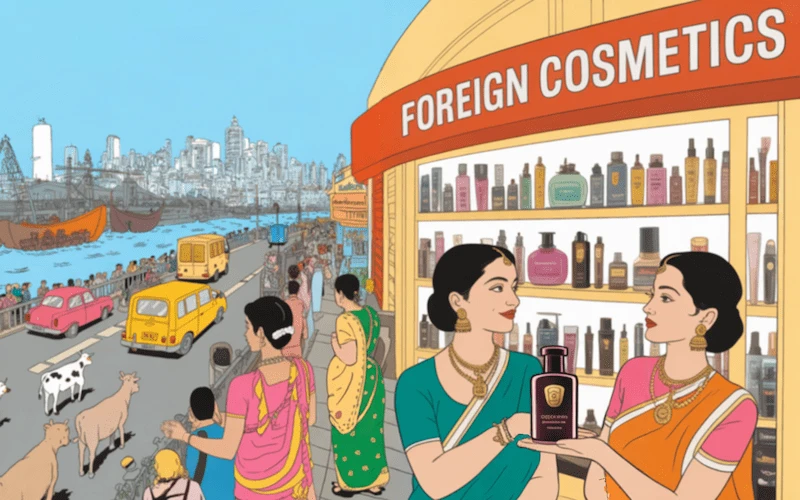
Launching a new business or product? Before you print those logos or buy that domain, here’s what most founders and creatives miss: your brand name isn’t truly yours until you’ve cleared it, registered it, and defended it.
This guide demystifies trademarks in India, from smart brand selection to protecting your mark both locally and internationally.
First Things First: What is a Trademark?
A trademark is a legally protectable sign that distinguishes your goods or services from others in the market. It can be a word, name, logo, symbol, sound, or even a shape - so long as it’s unique and capable of identifying the source of the product or service. While people often use terms like brand, logo, or brand name interchangeably, not all of these are automatically trademarks. A brand is a broader concept tied to reputation and identity, but a trademark is what gives that brand legal protection. Without registering it, your “brand” may not be protected at all.
The Legal Framework in India
Trademarks in India are governed by the Trade Marks Act, 1999 and the Trade Marks Rules, 2017, administered by the Office of the Controller General of Patents, Designs and Trade Marks (CGPDTM). The legislation outlines the process for registration, opposition, enforcement, and protection of trademarks across India.
Importantly, India is also a signatory to the Madrid Protocol, which allows trademark owners to seek protection in over 110 member countries through a single application filed via the Indian registry. This alignment with international systems makes it easier for Indian businesses to scale globally, and for foreign brands to protect their marks in India.
Does India Follow First-to-Use or First-to-File?
Unlike many jurisdictions that prioritize whoever files a trademark first, India follows a “first-to-use” system. This means that actual use of the mark in commerce, even without registration, can establish proprietary rights under common law, enforceable through an action for passing off. However, registering your mark provides statutory protection, evidentiary advantage, and easier enforcement under the Trade Marks Act, 1999, especially when expanding nationally or internationally. For this reason, both prior use and first filing are crucial factors in trademark strategy in India.
The Golden Rules of Trademark Selection
What makes a great trademark? Not just creativity, but legal defensibility.
| ✔️ Do This | ❌ Avoid This |
|---|---|
| Inventive or coined words (eg., “Zypheroidilion”) | Descriptive or generic words in common parlance, like “Best Shoes”, or “Joota” |
| Short, pronounceable, globally neutral words | Marks resembling or which sound like names of famous brands |
| Avoid common surnames and geographical names | Overused industry terms |
| Cross-check language and cultural meaning across markets | Anything obscene, religious or misleading |
| Check domain and social-media name availability | Using a name to sound like competitors, to sound clever |
A good trademark is:-
- Distinctive: not descriptive of your product/service
- Memorable: easy to recall
- Protectable: not likely to be rejected or opposed
Understanding Trademark Classes
Trademarks are registered by categories of goods or services, known as “classes.” Each class corresponds to a specific business area: like clothing (Class 25), software (Class 9), or legal services (Class 45). To protect your brand effectively, it’s important to identify and apply in the correct class (or multiple classes if needed). You can explore and search relevant trademark classes using the official TMclass tool, which is widely used by IP professionals around the world.
Trademark Search: The Step Everyone Skips (but Shouldn’t)
Before you spend a rupee or a pixel on your brand, do a clearance search.
Why is it important to conduct a thorough search before applying for a trademark? It helps identify existing or similar marks that could lead to objections, oppositions, or even legal disputes. A proper search saves time, money, and branding headaches by ensuring your chosen name is truly unique and protectable. Think of it as due diligence before investing in your identity.
In India:
- Use the IP India Public Search tool: https://tmrsearch.ipindia.gov.in/tmrpublicsearch/
- Check for phonetic and visual similarities
- Search in relevant classes (Class 25 for clothing, Class 9 for tech, etc.)
International Check:
- Use WIPO Global Brand Database: https://www3.wipo.int/branddb/en/
- For the US: https://tmsearch.uspto.gov
- For EU: https://euipo.europa.eu
Pro tip: Also do a Google/domain/social handle check to avoid future disputes.
While a basic search using the above tools will help to give you a basic idea about the uniqueness and defensibility of your brand name, its almost always advisable to get a legal professional to conduct a thorough search and generate a detailed legal opinion or TM search report in order to be absolutely sure about investing in one or the other brand name or trademark.
Trademark Registration in India: Process & Timelines
| Step | Action | Timeline |
|---|---|---|
| 1 | TM Search and class identification | 1 - 3 days |
| 2 | Filing TM application (online) | 1 day |
| 3 | TM Registry examination report and objection, if any | 2 - 6 months |
| 4 | Show cause hearing/ reply filing | 1 - 3 months |
| 5 | Advertisement in Trademark Journal | Approx. 6 months |
| 6 | Opposition, if any, by public | 4 months |
| 7 | Registration certificate issued | Approx. 12 - 18 months unopposed |
What Rights Do You Get With a Trademark?
Once registered:
- Exclusive rights over the mark in India for that class
- Right to use ® symbol (™ is used for pending marks)
- Right to stop third parties from using identical or deceptively similar marks
- Right to license, assign, or franchise your brand
- Basis for international filings via Madrid Protocol
Enforcing Your Trademark Rights
Pre-litigation Tools:
- Cease & Desist Notices: First step to assert rights
- Domain takedown/Instagram impersonation complaints
- Customs recordal for preventing import of counterfeit goods
Litigation:
- File civil suit for injunction & damages in a Commercial Court
- Trademark infringement AND passing off actions available
- Interim relief (injunction) can be obtained within days if urgency is proven
Quick Tip:
Often, early enforcement deters copycats. Don’t wait till dilution harms your brand.
Going Global? Consider the Madrid Protocol
- India is a signatory to the Madrid System. You can file a single application via the Indian TM Registry to protect your mark in over 110 countries.
- Ideal for brands targeting export or e-commerce across borders.
Requirements:
- Your mark must first be registered (or applied for) in India
- Same goods/services and mark must be applied globally
Final Takeaways
- Don’t name your brand in a vacuum. Do a pre-filing clearance search.
- File early.
- Monitor regularly. Oppose conflicting marks. Defend yours actively.
- Think global if needed. Madrid Protocol makes this feasible.
Disclaimer: This post is intended as general guidance and does not constitute legal advice. For tailored strategy or litigation, consult a qualified trademark lawyer at KTB Law Offices. Reach us at info@ktblegal.in
More Articles
-

Setting Up Retail Operations for Imported Cosmetic Products in India - Legal & Regulatory Overview 2025
15 Jun 2025
-

KYC Requirements for Apps, Startups & Online Platforms in India: PPI and Non-PPI (2025)
30 Jun 2025
-

Entry Options for Foreign Companies entering India (2025 Update)
26 Jun 2025
-

What Happens After SEIS? ASSSE Pilot Survey 2025 and Incentives for Service Exporters Under India’s Current Trade Framework
29 May 2025
